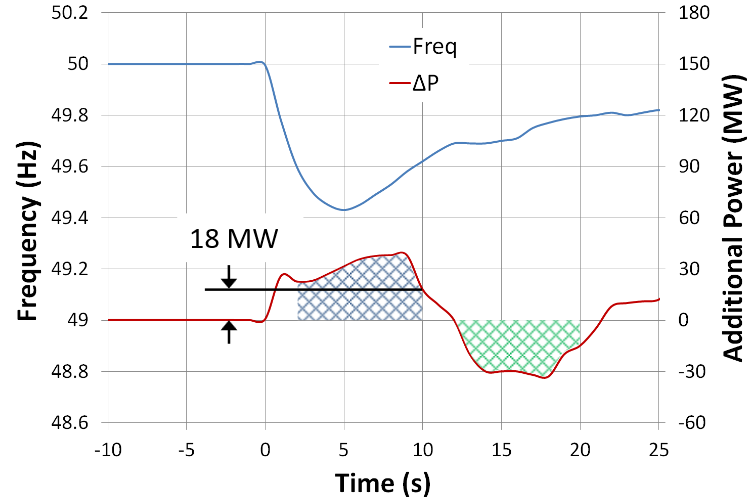Frequency Services
Fast Frequency Response
With appropriate control systems, both synchronous and non-synchronous generators can provide fast-acting response to changes in frequency that supplements any inherent inertial response. In particular, Fast Frequency Response (FFR) as defined below (MW response faster than the existing Primary Operating Reserve times) may, in the event of a sudden power imbalance, increase the time to reach the frequency nadir and mitigate the RoCoF in the same period, thus lessening the extent of the frequency transient. This product runs in conjunction with SIR so providers who can maintain or increase their outputs in these timeframes are eligible for both services.

Fast Frequency Response is defined as the additional increase in MW output from a generator or reduction in demand following a frequency event that is available within 2 seconds of the start of the event and is sustained for at least 8 seconds. The extra energy provided in the 2 to 10 second timeframe by the increase in MW output must be greater than any loss of energy in the 10 to 20 second timeframe due to a reduction in MW output below the initial MW output.
Primary Operating Reserve
Primary Operating Reserve (POR) is the additional MW output required at the Frequency nadir (minimum), compared to the pre-incident output where the nadir occurs between 5 and 15 seconds after an Event.
Secondary Operating Reserve
Secondary Operating Reserve (SOR) is the additional MW output required compared to the pre-incident output, which is fully available and sustainable over the period from 15 to 90 seconds following an Event.
Tertiary Operating Reserve band 1
Tertiary Operating Reserve band 1 (TOR1) is the additional MW output required compared to the pre-incident output which is fully available and sustainable over the period from 90 seconds to 5 minutes following an Event.